- About
- News
- Faculty
-
Academics
- School of Physical Science and Technology (SPST)
- School of Life Science and Technology (SLST)
- School of Information Science and Technology (SIST)
- School of Entrepreneurship and Management (SEM)
- School of Creativity and Art (SCA)
- Institute of Humanities (IH)
- School of Biomedical Engineering (BME)
- Shanghai Institute for Advanced Immunochemical Studies (SIAIS)
- iHuman Institute
- Institute of Mathematical Sciences (IMS)
- Center for Transformative Science (CTS)
- Institute of Carbon Neutrality (ICN)
- Shanghai Clinical Research and Trial Center
- Tech Transfer
- Global
- Campus Life
-
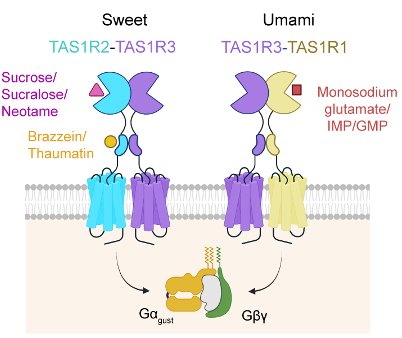 On June 24, a research team led by Assistant Professor Hua Tian and Professor Liu Zhi-Jie from the iHuman Institute and the School of Life Science and Technology at ShanghaiTech University published a study in Nature via Accelerated Article Preview (AAP). Titled “Structural and functional characterization of human sweet taste receptor,” the study reports the cryo-EM structures of ...
On June 24, a research team led by Assistant Professor Hua Tian and Professor Liu Zhi-Jie from the iHuman Institute and the School of Life Science and Technology at ShanghaiTech University published a study in Nature via Accelerated Article Preview (AAP). Titled “Structural and functional characterization of human sweet taste receptor,” the study reports the cryo-EM structures of ... -
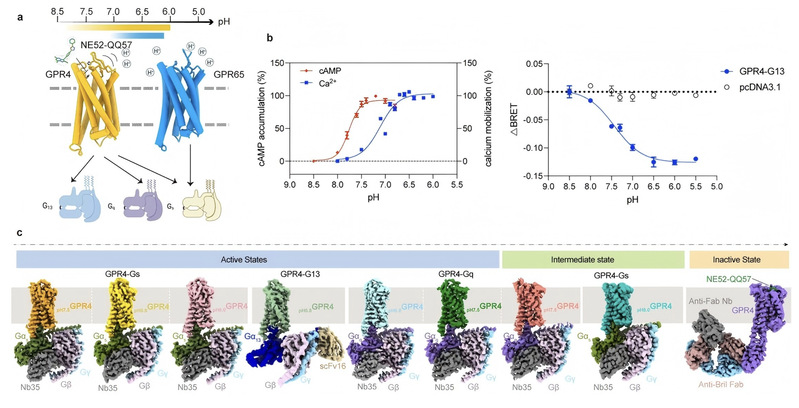 Led by tenure-track Assistant Professor Hua Tian and Executive Director Liu Zhi-Jie from iHuman Institute at ShanghaiTech University, a joint research team has published a study in Cell Research, revealing how human G protein-coupled receptors (GPCRs) detect changes in acidity (pH). The research focuses on proton-sensing GPCRs, specifically GPR4 and GPR65, uncovering their roles in ...
Led by tenure-track Assistant Professor Hua Tian and Executive Director Liu Zhi-Jie from iHuman Institute at ShanghaiTech University, a joint research team has published a study in Cell Research, revealing how human G protein-coupled receptors (GPCRs) detect changes in acidity (pH). The research focuses on proton-sensing GPCRs, specifically GPR4 and GPR65, uncovering their roles in ... -
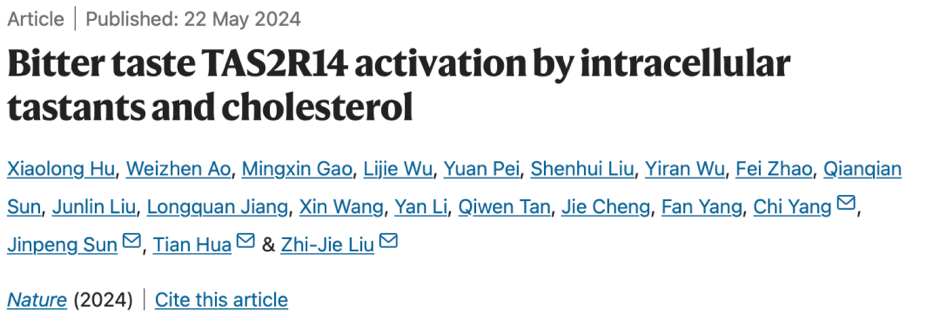 Recently, a team led by Professor Liu Zhi-Jie, Director of the iHuman Institute, and Assistant Professor Hua Tian at the School of Life Science and Technology (SLST), in collaboration with the teams from Shandong University, and Shanghai Ninth People’s Hospital affiliated to Shanghai Jiao Tong University School of Medicine, unveiled the complex interactions between bitter taste receptor...
Recently, a team led by Professor Liu Zhi-Jie, Director of the iHuman Institute, and Assistant Professor Hua Tian at the School of Life Science and Technology (SLST), in collaboration with the teams from Shandong University, and Shanghai Ninth People’s Hospital affiliated to Shanghai Jiao Tong University School of Medicine, unveiled the complex interactions between bitter taste receptor... -
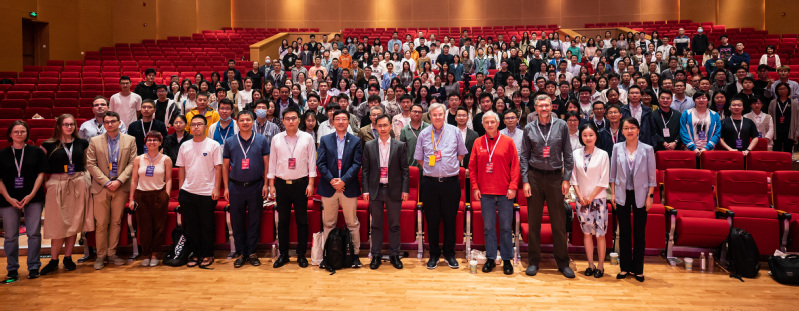 The event lasted for three days. iHuman hosted its 8th iHuman Forum from October 18 to 20 in the Conference Center. The Forum aims to be a platform for researchers to present and exchange their latest advances in the fields of structural biology, chemical biology, computational biology, medicinal chemistry and cryo-electron tomography. The opening of the forum was presided over by Raymond Stevens,...
The event lasted for three days. iHuman hosted its 8th iHuman Forum from October 18 to 20 in the Conference Center. The Forum aims to be a platform for researchers to present and exchange their latest advances in the fields of structural biology, chemical biology, computational biology, medicinal chemistry and cryo-electron tomography. The opening of the forum was presided over by Raymond Stevens,... -
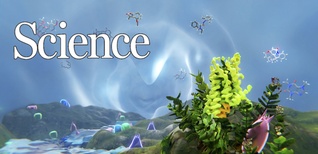 The taste sensory system is responsible for examining food nutrition and avoiding ingestion of harmful substances. In humans, the tastants evoke five distinct taste sensations: sweet, bitter, salty, sour and umami. Interestingly, ion channels transduce the sour and salty signals, whereas, sweet, umami and bitter taste are mediated by G protein-coupled receptors (GPCRs). Among the five ta...
The taste sensory system is responsible for examining food nutrition and avoiding ingestion of harmful substances. In humans, the tastants evoke five distinct taste sensations: sweet, bitter, salty, sour and umami. Interestingly, ion channels transduce the sour and salty signals, whereas, sweet, umami and bitter taste are mediated by G protein-coupled receptors (GPCRs). Among the five ta... -
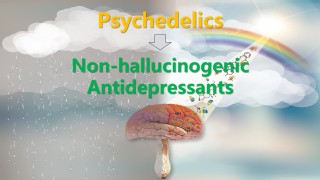 According to the 2019 World Health Organization (WHO) report, over 350 million people worldwide live with depression, with an annual increase rate of approximately 18%. In China, depression affects over 95 million people. About 67% of those with depression had suicidal ideation, and 25% attempted suicide. However, most existing antidepressants are slow-acting, short-enduring and have low response ...
According to the 2019 World Health Organization (WHO) report, over 350 million people worldwide live with depression, with an annual increase rate of approximately 18%. In China, depression affects over 95 million people. About 67% of those with depression had suicidal ideation, and 25% attempted suicide. However, most existing antidepressants are slow-acting, short-enduring and have low response ... -
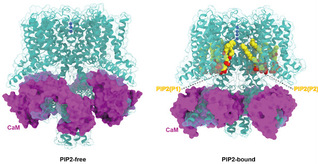 The voltage-gated potassium (Kv) channels promote the outflow of potassium ions in the repolarization phase of the action potential and play a crucial role in regulating the membrane potential of excitable cells in the neuronal and cardiovascular systems. The human Kv channels are composed of 12 subfamilies (Kv1-Kv12), among which Kv7, also known as KCNQ channe...
The voltage-gated potassium (Kv) channels promote the outflow of potassium ions in the repolarization phase of the action potential and play a crucial role in regulating the membrane potential of excitable cells in the neuronal and cardiovascular systems. The human Kv channels are composed of 12 subfamilies (Kv1-Kv12), among which Kv7, also known as KCNQ channe... -
 The research group led by Prof. Xu Fei at iHuman Institute o recently reported a new structure of the Frizzled receptors - an emerging class of cancer targets. They determined the first G-protein complexed Frizzled receptor structure and published their findings in the high-impact journal - Cell Research, with the title “Cryo-EM structure of constitutively active human Frizzled 7 in complex ...
The research group led by Prof. Xu Fei at iHuman Institute o recently reported a new structure of the Frizzled receptors - an emerging class of cancer targets. They determined the first G-protein complexed Frizzled receptor structure and published their findings in the high-impact journal - Cell Research, with the title “Cryo-EM structure of constitutively active human Frizzled 7 in complex ... -
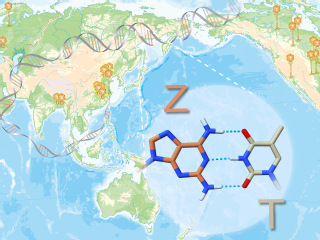 Recently, Dr. Zhao Suwen’s team at the iHuman Institute, collaborating with other scientists from Tianjin University, and the Agency for Science, Technology and Research (A*STAR)/ University of Illinois at Urbana-Champaign (UIUC) have solved a long-standing mystery of Z genome that comprises entirely non-canonical Z-T base pairs instead of canonical A-T base pairs in bacteriophages (Figure 1). Th...
Recently, Dr. Zhao Suwen’s team at the iHuman Institute, collaborating with other scientists from Tianjin University, and the Agency for Science, Technology and Research (A*STAR)/ University of Illinois at Urbana-Champaign (UIUC) have solved a long-standing mystery of Z genome that comprises entirely non-canonical Z-T base pairs instead of canonical A-T base pairs in bacteriophages (Figure 1). Th... -
 iHuman Institute Distinguished Professor Dr. Kurt Hermann Wüthrich, Nobel Laureate in Chemistry, was honored with the 2020 Magnolia Award in recognition of his great contributions and achievements in scientific research, and for nurturing and mentoring Chinese young scientists.The Magnolia Award, which has been awarded annually since 1989, was established to commend...
iHuman Institute Distinguished Professor Dr. Kurt Hermann Wüthrich, Nobel Laureate in Chemistry, was honored with the 2020 Magnolia Award in recognition of his great contributions and achievements in scientific research, and for nurturing and mentoring Chinese young scientists.The Magnolia Award, which has been awarded annually since 1989, was established to commend... -
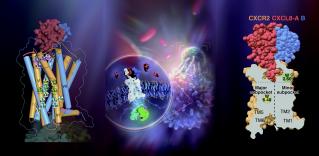 A research team from iHuman Institute of ShanghaiTech University has made a new discovery in the field of human chemokine system. This study fills in a critical gap, which is how endogenous chemokines activate endogenous chemokine receptors. The article, entitled Structure basis of CXC chemokine receptor 2 activation and signaling was published in the prestigious journal Nature, available onl...
A research team from iHuman Institute of ShanghaiTech University has made a new discovery in the field of human chemokine system. This study fills in a critical gap, which is how endogenous chemokines activate endogenous chemokine receptors. The article, entitled Structure basis of CXC chemokine receptor 2 activation and signaling was published in the prestigious journal Nature, available onl... -
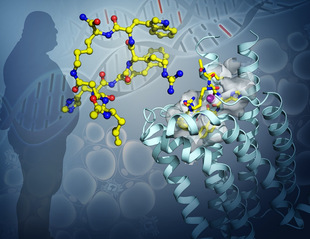 Researchers at the iHuman Institute of ShanghaiTech University have made another discovery in the advancement of human health, this time involving an important protein for controlling obesity - the melanocortin-4 receptor. The research is to be published in the prestigious journal Science, available online from April 24, 2020. The Stevens lab which led the work has been intensely focused...
Researchers at the iHuman Institute of ShanghaiTech University have made another discovery in the advancement of human health, this time involving an important protein for controlling obesity - the melanocortin-4 receptor. The research is to be published in the prestigious journal Science, available online from April 24, 2020. The Stevens lab which led the work has been intensely focused... -
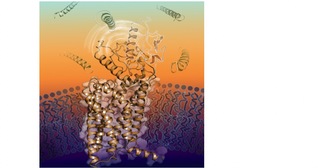 Researchers from the iHuman Institute at ShanghaiTech University, Chinese Academy of Sciences (Shanghai Institute of Materia Medica, SIMM), East China Normal University, University of Southern California, and the Danish biopharmaceutical company, Novo Nordisk, have determined the first “peptide-free inactive structure of the full-length human glucagon like peptide-1 receptor (GLP-1R) at atomic re...
Researchers from the iHuman Institute at ShanghaiTech University, Chinese Academy of Sciences (Shanghai Institute of Materia Medica, SIMM), East China Normal University, University of Southern California, and the Danish biopharmaceutical company, Novo Nordisk, have determined the first “peptide-free inactive structure of the full-length human glucagon like peptide-1 receptor (GLP-1R) at atomic re... -
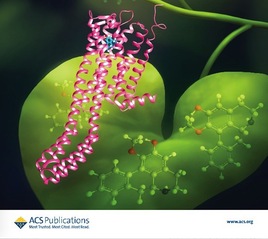 Recently, Prof. Shui Wenqing’s group from iHuman Institute and SLST has made a breakthrough in bioactive screening from herbal extracts. Based on their previous work in developing the affinity mass spectrometry (MS) technique for ligand screening (Chemical Science 2018, Analytical Chemistry 2019), they combined affinity MS-based screening with compound isolation and ...
Recently, Prof. Shui Wenqing’s group from iHuman Institute and SLST has made a breakthrough in bioactive screening from herbal extracts. Based on their previous work in developing the affinity mass spectrometry (MS) technique for ligand screening (Chemical Science 2018, Analytical Chemistry 2019), they combined affinity MS-based screening with compound isolation and ...
- per page 14 records total 38 records
- firstpage <<previouspage nextpage>> endpage
- PageNumber 1/3 jumpto

